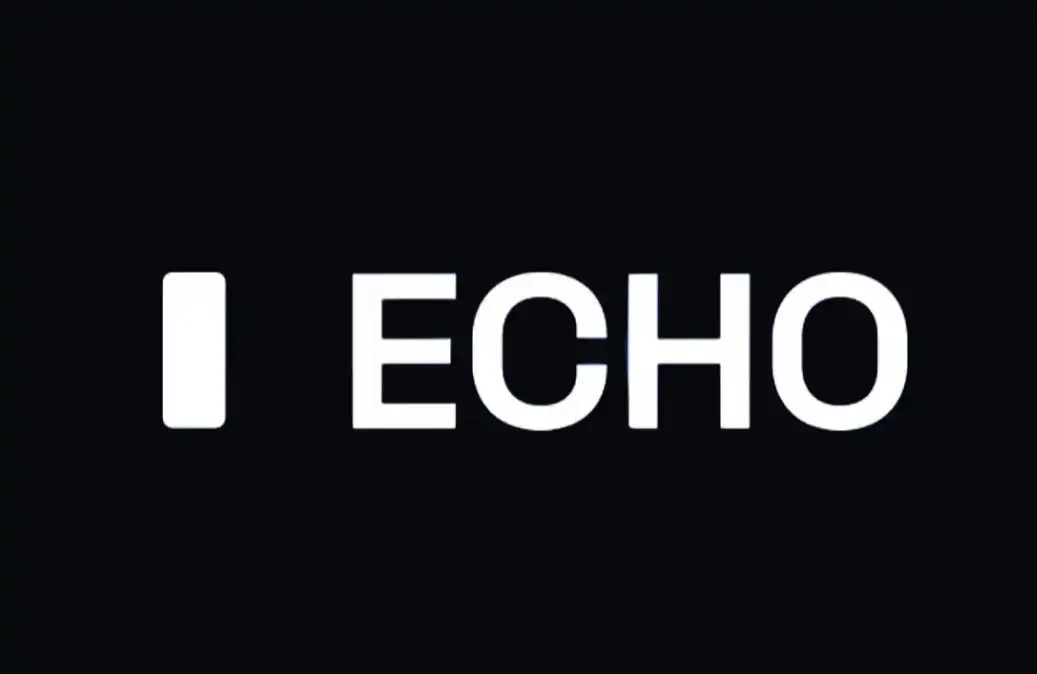Identity System: More than Defi's blockchain Web3 era
What's special about Ethereum is that it's not a separate chain created for the so-called Defi. Personally, it's more like Silicon Valley, like a showThe testing ground for great experimentsEthereum is incubated andExperimenting with new and interesting things with potential. Looking back at Ethereum, from the original token ETH to the ERC20 token issue in 17 to the current DEFI, there is no doubt that Ethereum does not exhibit the charm of its financial nature. But the past IOTA, NEO, EOS and other projects have not had a weak wealth effect, but failed to demonstrate the creativity to match their market value.
At the root of this is what you might call community.

The community attracts a large number of developers to do continuous research. Even if they fail, they turn around and start again, and many Ethereum developers attract the constant innovation of Ethereum development.
Ethereum today has a social nature.

Ethereum Hackathon EthDenver2019
Because of this, its appeal extends far beyond Defi. There is OpenSea on Ethereum that can trade Cryptopunk and Chainface; The domain name is widely used by the community. ETH (Ethereum Name Service); There are hackathons and learnings that can be organized in the blockchain fieldGitcoin; There is a governance tool developed by Balancer that costs no GasSnapshotUniswap and the development of a delegated governance toolSybil; There are native content publishing platform mirror.xyz and give artists resale bonusesZora; There are community validation management toolsCollab.Land; On-chain data analysis softwareDune AnalyticsandNansen; There are user motivation platforms, Rabbit holes, and decentralized push servicesEPNSAnd so on.
Unlike the various EVM connections to Ethereum that have super high TVL --L2s of Defi for DefiMany of these products are apps that don't generate "coin" value, but they do bring a sense of playability and engagement to Ethereum, making the Ethereum community more cohesive. DCG also recentlysaid."With better middleware solutions, developers can embed secure, high-quality development results into their applications for faster delivery, while also focusing on a superior user experience."
With some time agoThe contract interacts with airdrop of offspring coinsEthereum addresses have also become increasingly important.How many contracts are interacted with and how much Snapshot governance is participated in are important indicators of the "value" of an address.As A16Z says in "On the Governance of Cryptocurrencies" :We believe that a token allocation model that rewards true early adopters and contributors has the potential to create more engaged communities and thus more sustainable agreements.
Users' on-chain wallets are becoming more and more valuable, and to some extent Ethereum addresses have already appearedThe trend from social attributes to value attributes. And even so, there is a serious missing today, especially when it comes to key areas such as on-chain governance:Lack of a decentralized unique identity protocol.Today's anonymous address may or may not represent anyone, so it cannot participate in the human practice of role-based authority generation.
It is increasingly important to build an effective crypto economic ecosystem and blockchain governance. A unique identity layer is key for both parties.
Identity is infrastructure.
With the rise of DEFI and NFT, has the operable blockchain entered a stage of user cultivation to some extent? How much of a role will identity systems play?
Linda Xie wrote in the bookScalar Capital partners on decentralized identity and reputation", says that developing high-quality identity and reputation services is a difficult problem.The end result, I think, is likely to be a combination of centralized and decentralized systems.Linking real-world identities to encrypted networks is particularly difficult without a centralized entity to guarantee the correctness of the data. For example, you can go through a centralized identity service and then plug it into an encrypted application. You can also collect information through centralized companies, but no one company can control people's reputations or own documents. I'd love to see more experimental approaches and I'd love to talk to people in the field.
This article will introduce two Ethereum identity system programs that enable unique verification from on-chain identity setup to decentralized and centralized combination. Explore some of the authentication systems in the Web3.0 era.
On-chain identity solution: IDX (formerly 3Box)
In fact, the on-chain identity system has already been demonstrated in the largest Ethereum browser, Etherscan. Both ENS and Uniswap's Sybil can replace the wallet address to be displayed in the browser, which is beyond the difficult to remember address to become an important personal identity certificate.

3Box takes it a step further by binding individual addresses on the Ethereum chain to centralized media such as email, Twitter, and GitHub to determine the user's identity, giving Ethereum addresses uniqueness and relative trust.
3Box is positioning itself as the new home on the web, introducing a wallet address and identity credit system, and storing information via IPFS. Recently, 3Box Labs has completed the upgrade, splitting the 3Box upgrade to Ceramic and IDX. The updated IDX has even bigger ambitions:Open the application's identity protocol.

IDX is briefly described in Twitter as Decentalized Identity and Interoperable Data Cross-Chain Protocol. Attach data to the user and find everything in one place. Applies to all Web3 technologies. Currently, 3Box-based IDX supports more than 900 projects, has 35,000 registered user information, and records more than 250,000 messages.

IDX concept map, where user names are visible, bundled with decentralized addresses for Bitcoin, Ethereum, IPFS, etc., and centralized Discord, Twitter, as well as blogs and photos
Since IDX is still in beta, you can start with 3Box.However, it is worth noting that due to the upgrade, the team will gradually abandon the maintenance of the old 3Box and all 3Box configuration files will be migrated to IDX.
3Box is a distributed database infrastructure on Ethereum that supports both public and private data for Ethereum users and is scalable. First of all, 3Box logged in based on the wallet address, but users can change their username in 3Box and display it in some dApps, so that the hard-to-remember wallet address is not displayed. At the same time, centralized systems such as Twitter, Email and GitHub can be added to increase the credibility of identity, completing a set of trust closed-loop from decentralization to centralization, and making the user identity and reputation system three-dimensional.

3Box records on-chain activity, as well as personal identity updates.

DAO organization management software DAOHAUS supports displaying the identity set in 3Box

1Hive also taps into 3Box's identity system
Above, 3Box uses decentralized addresses as the center, and adds centralized software to add credibility (or even uniqueness) to complete the identity system. The updated IDX will also continue this tradition and extend the address from Ethereum to more chains for users to build oneA unified digital identity that contains all data.
From Void to Reality - Personal Identity Uniqueness BRIghtID
BrightID is based on the unique authentication of personal identity, satisfying the unique authentication system of the user. BrightID has been mentioned many times by Ethereum founder Vitalik Buterin:
BrightID is a decentralized identity platform that creates a decentralized, social network-based mechanism to prove that some accounts correspond to a single individual. -"V God on the Ethereum Foundation's Quadratic Funding"
If you want to authenticate, BrightID is not just a machine or a person with 100,000 accounts, BrightID can solve the authentication problem. -"Looking back at the "death" of Ethereum several times, blockchain ecology is the most important"
The idea behind BrightID is that when we can see who verifies whom, and who is verified by whom, it might become a decentralized approach for individuals. I don't know if this will work, because it's just an experiment right now. -"Vitalik Buterin: Ethereum Community Governance and Quadronic GitCoin Funding"
BrightID is there for the benefit of humanity, according to its websitePublic goods. It is a non-invasive, decentralized, open source technology designed to revolutionize authentication and thus lay the foundation for a free and democratic society. BrightID is a social identity network that allows users to prove to applications that they are not using multiple accounts. It solves the problem of unique identity by creating and analyzing a social graph. With BrightID, projects and users can participate in new experimental currencies, voting systems, benefit programs, and infrastructure-level conditions for a wide variety of projects that do not yet exist.
At BrightID, no one can create multiple accounts and all users have their own unique BrightID.A user who has and completes BRIghtID validation can be considered a human being with uniqueness. Ensuring uniqueness provides support for personal identity and reputation building, identity recognition, user authentication of applications and activities, and provides unlimited possibilities for further migration of more important possibilities online and on the chain.It's worth noting that BrightID does its validation via an online meeting to ensure identity uniqueness. The account is not valid until the user has completed the authentication.
BrightID already has access to projects such as Gitcoin, Rabbithole, 1Hive and secondary funding app Clr. Fund to help it prove its identity.

conclusion
So far, this paper introduces two ways to build an identity system in different modes. IDX (3Box) builds an identity system from the perspective of the chain, combining with other centralized platforms and decentralized account data. BrightID, on the other hand, provides an identity system for other open source DAPs using a name-authentication system, more specifically to verify identity uniqueness. Constructing a complete and three-dimensional identity system will be implemented by other applications. The two projects, which took different paths, are both playing an incomparable role in the migration of identity and trust to the chain, which is an important link of Web3. It is expected that the blockchain can carry more things through the development of identity system.
Reference link:
3Box
IDX
BrightID
Reference reading:
"Scalar Capital partners on decentralized identity and reputation"
"Why is decentralized identity important?"
"Unravelling the Mysteries of Digital Identity (1/2)"
"Demystifying Digital Identity (2/2)"
"BRIghtID: Authentication Guide to the Ethereum Ecosystem"
Welcome to join the official BlockBeats community:
Telegram Subscription Group: https://t.me/theblockbeats
Telegram Discussion Group: https://t.me/BlockBeats_App
Official Twitter Account: https://twitter.com/BlockBeatsAsia


 Forum
Forum Finance
Finance
 Specials
Specials
 On-chain Eco
On-chain Eco
 Entry
Entry
 Podcasts
Podcasts
 Activities
Activities
 OPRR
OPRR








